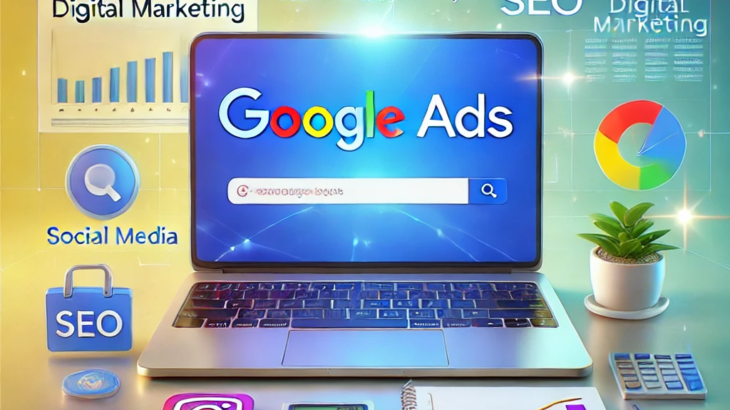If you’re someone just starting out or considering a career in digital marketing, you’ll find countless resources. You could turn to platforms like YouTube, Udemy, or any other e-learning site and search for courses on Google Ads, SEO, Facebook Ads, Programmatic Advertising, Growth Marketing, and so on. You’ll likely be overwhelmed. So, let me walk you through how I would approach learning digital marketing if I had to do it all over again.
Step 1: Avoid Shortcuts and Have the Right Mindset
When people look for ways to learn digital marketing, they often fall into a trap of seeking shortcuts, such as how to make a quick buck. You’ll find content that promises you’ll earn $200 with digital marketing, or create a blog that’ll make you $2,000 a month in no time. Trust me, it’s not that simple.
Right Mindset Tip: Start by understanding what marketing actually is and why businesses use digital marketing. Focus on the purpose behind digital marketing before diving into the tactics. It will take time and effort to build a solid foundation.
Step 2: Create a Website and Learn HTML Basics
A fundamental skill for any digital marketer is understanding websites because, ultimately, most marketing efforts funnel toward a company’s website. Start by creating your own website, even if it’s a simple one. Platforms like GoDaddy can help you secure a domain, while WordPress or even Google Sites can assist in building a basic site.
When I started, I realized how critical it is to know some HTML. You don’t need to become a web developer, but knowing how to tweak HTML will give you an edge later when dealing with conversion tags, ad tracking, and troubleshooting.
Pro Tip: Use free resources like W3Schools to get up to speed with HTML.
Step 3: Become an Expert in One Platform, Avoid the Noise
Instead of trying to learn everything at once (Google Ads, Facebook Ads, SEO, etc.), start by mastering one platform. In my case, I focused on Google Ads, which is the gateway to all paid media advertising. Once you’re proficient in one, it will be easier to transition to others.
Example: Early in my career, I worked exclusively on one platform—DFP (DoubleClick for Publishers)—for two years. This intense focus made it easy to pick up other platforms later on.
Step 4: Hands-On Experience with Google Ads
After choosing your platform (I recommend Google Ads), start practicing. Create a free Google Ads account, design a campaign, and implement strategies—even if it’s for hypothetical clients. This real-world experience will set you apart when it comes to job interviews or freelance gigs.
Tools:
Design is a big part of digital marketing, especially if you’re running display or video campaigns. You don’t need to be a graphic designer, but tools like Canva are perfect for beginners. They allow you to create stunning visuals for campaigns without prior design experience.
Tool:
Step 5: Learn Reporting and Analytical Tools
Once you’ve created a few campaigns, it’s time to start learning about reporting and analytics. One of the most important tools in this space is Google Analytics. Every digital marketer must understand how to track and interpret website traffic data. Set up Google Analytics on your website and start experimenting with data reports.
Example: I also recommend exploring Microsoft Clarity, a free tool that allows you to analyze user behavior on websites through heatmaps and session recordings.
Step 6: Learn the Marketing Ecosystem (Google Tag Manager, Data Studio, etc.)
By now, you’re familiar with the technical side of digital marketing. Next, focus on the marketing ecosystem.Start by mastering Google Ads, Google Tag Manager, and Google Data Studio. These platforms allow you to create integrated campaigns and manage large-scale marketing efforts more effectively.
Pro Tip: Use free platforms like Data Studio to visualize and analyze your campaign performance. It’s an invaluable skill in today’s data-driven marketing environment.
Step 7: Explore Other Channels and Formats
Now that you’re proficient in one platform (e.g., Google Ads), start exploring other channels like Facebook Ads, Snapchat, LinkedIn, or Twitter. Understand how their ad formats differ from Google Ads and why businesses diversify across these platforms.
Example: I’ve worked on cross-channel campaigns where the same messaging was delivered through different formats—on Facebook as carousel ads, on YouTube as non-skippable ads, and on Google as display ads. Understanding these differences is key to optimizing a full-funnel strategy.
Step 8: Learn Advanced Topics
With a solid foundation, you’re ready to learn advanced digital marketing topics such as:
- Programmatic advertising
- App marketing
- Email marketing
- Customer Data Platforms (CDPs) and Data Management Platforms (DMPs)
These advanced areas will give you a competitive edge and make you among the top talents in the market.
Step 9: Develop Strategic Skills (Media Planning & Budgeting)
By now, you have become proficient in multiple tools and platforms. It’s time to shift gears and learn strategic skills like media planning and budgeting. This is where you’ll be able to create complete marketing strategies for companies, deciding where and how to allocate budgets, select channels, and craft messaging.
Example: I’ve designed marketing strategies for clients with multi-million dollar budgets. Understanding how to scale a campaign and allocate resources efficiently is key to success.
Final Thoughts: It’s a Marathon, Not a Sprint
If I could start my career over, I’d focus more on the long-term learning process and avoid the distractions of quick success. Digital marketing is constantly evolving, and continuous learning is the only way to stay ahead. Whether you’re just starting out or refining your skills, stay patient and committed.
Thank you for joining me on this journey. If you follow this roadmap, I’m confident you’ll have a solid foundation to build your digital marketing career.









